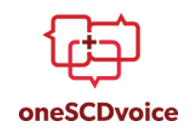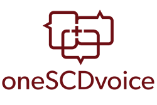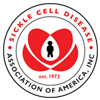Trusted Resources: Evidence & Education
Scientific literature and patient education texts
Transcutaneous electrical nerve stimulation (TENS) for pain management in sickle cell disease
source: Cochrane Database of Systematic Reviews
year: 2017
authors: Sudipta Pal, Ruchita Dixit, Soe Moe, Myron A Godinho, Adinegara BL Abas, Samir K Ballas, Shanker Ram, Uduman Ali M Yousuf
summary/abstract:As defined by the American Physical Therapy Association, TENS is the application of electrical stimulation to the skin for pain control. It is non-invasive, inexpensive, safe, and easy to use; a small battery-powered device applies an electric current via two or more non-invasive skin electrodes to stimulate underlying nerves and thus reduce pain perception. It can be applied with different frequencies, varying from low (< 10 Hz) to high (> 50 Hz). Intensity can also vary with low-intensity stimulation producing a sensation alone, while high-intensity stimulation triggers muscle contraction, and hence movement. Low-frequency TENS is usually given at high-intensity (producing motor contraction and sensation), while high-frequency TENS is given at lower intensities (producing both sensation and muscle contraction) (DeSantana 2008).
Conventional TENS has a high-stimulation frequency (40 Hz to 150 Hz) and low intensity between 10 mA to 30 mA. The pulse duration is short (up to 50 microseconds). The onset of analgesia with this setup is virtually immediate. Pain relief lasts while the stimulus is turned on, but it usually abates when the stimulation stops. In acupuncture like settings, the TENS unit delivers low frequency stimulus trains at 1 Hz to 10 Hz, at a high stimulus intensity, close to the tolerance limit of the individual. This method is uncomfortable and is often considered for those who do not respond to conventional TENS. Pulsed (burst) TENS uses low-intensity stimuli firing in high-frequency bursts, but does not have any added advantage over the conventional method.
organization: Melaka‐Manipal Medical College, Malaysia; Manipal University, India; Thomas Jefferson University, USADOI: 10.1002/14651858.CD012762
read more
Related Content
-
Predictive factors of daily opioid use and quality of life in adults with sickle cell diseaseObjectives: In adults with sickle cell ...
-
Discovery First in Human: Bringing Awareness of Sickle Cell Diseasehttps://www.youtube.com/watch?v=kffu_YvJ...
-
Explaining Blood Transfusions to a Child With Sickle Cell DiseaseYou are receiving this brochure because ...
-
Music therapy helps relieve pain in adults with sickle cell disease, pilot trial suggestsMusic therapy can help ease pain in ad...
-
FDA Approves Novel Treatment to Target Abnormality in Sickle Cell DiseaseToday, the U.S. Food and Drug Administra...
-
Orphan Drug Designation Granted for CSL Behring’s Investigational Plasma-Derived Hemopexin Therapy for Sickle ...Global biotherapeutics leader CSL Behrin...
-
sicklecell101Pins from sicklecell101 on Pinterest...
To improve your experience on this site, we use cookies. This includes cookies essential for the basic functioning of our website, cookies for analytics purposes, and cookies enabling us to personalize site content. By clicking on 'Accept' or any content on this site, you agree that cookies can be placed. You may adjust your browser's cookie settings to suit your preferences. More Information
The cookie settings on this website are set to "allow cookies" to give you the best browsing experience possible. If you continue to use this website without changing your cookie settings or you click "Accept" below then you are consenting to this.




 +myBinder
+myBinder
